当前位置:
X-MOL 学术
›
J. Mater. Chem. C
›
论文详情
Our official English website, www.x-mol.net, welcomes your
feedback! (Note: you will need to create a separate account there.)
Facile ACQ-to-AIE transformation via diphenylphosphine (DPP) modification with versatile properties
Journal of Materials Chemistry C ( IF 5.7 ) Pub Date : 2022-01-26 , DOI: 10.1039/d1tc05810j
Fangjun Ye 1 , Chengzhen Shen 1 , Jianxin Guan 1 , Yiming Liu 1 , Xiaoge Wang 1 , Jingtian Wang 2 , Ming Cong 2 , Weibin Wang 2 , Ting Zhang 2 , Bo Zou 2 , Junrong Zheng 1 , Yuguo Ma 1
Journal of Materials Chemistry C ( IF 5.7 ) Pub Date : 2022-01-26 , DOI: 10.1039/d1tc05810j
Fangjun Ye 1 , Chengzhen Shen 1 , Jianxin Guan 1 , Yiming Liu 1 , Xiaoge Wang 1 , Jingtian Wang 2 , Ming Cong 2 , Weibin Wang 2 , Ting Zhang 2 , Bo Zou 2 , Junrong Zheng 1 , Yuguo Ma 1
Affiliation
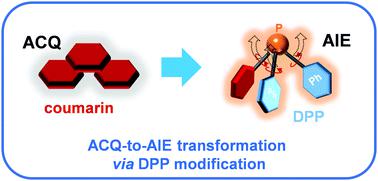
|
Aggregation-induced emission (AIE) materials have attracted increasing research attention due to their broad application potential. The major design strategy for AIE luminogens (AIEgens) is incorporating molecular rotors, such as tetraphenylethylene (TPE) and triphenylamine (TPA), into conjugated skeletons to decrease intermolecular π–π interactions. Therefore, the diversity of AIEgens is usually determined by the types of molecular rotors. Herein, we report a new molecular rotor, diphenylphosphine (DPP), that can be incorporated facilely into a typical aggregation-caused quenching (ACQ) luminophore to facilitate ACQ-to-AIE transformation. Due to the large steric hindrance and sp3 hybrid conformation of diphenylphosphine, the intermolecular π–π interaction is limited to a certain extent; the photoluminescence quantum yields of our AIEgens range from 10.3% to 47.0%. Furthermore, the luminescent color of the molecules can be tuned from blue to orange by adjusting the electron-donating/withdrawing strength of the substituent groups. At the same time, the AIEgens also exhibit novel pressure-induced emission enhancement (PIEE) properties. The rapid intersystem crossing (ISC) process was explored as the DPP-based AIE mechanism by ultrafast IR spectroscopy. To our best knowledge, this is the first systematic study of a general strategy to realize ACQ-to-AIE transformation by using the DPP group, which greatly increases the diversity of AIEgens as well as their potential applications.
中文翻译:

通过具有多种特性的二苯膦 (DPP) 改性轻松实现 ACQ 到 AIE 的转化
聚集诱导发射(AIE)材料由于其广泛的应用潜力而引起了越来越多的研究关注。AIE 发光体 (AIEgens) 的主要设计策略是将分子转子,例如四苯乙烯 (TPE) 和三苯胺 (TPA) 结合到共轭骨架中,以减少分子间的 π-π 相互作用。因此,AIEgens的多样性通常由分子转子的类型决定。在这里,我们报告了一种新的分子转子二苯膦 (DPP),它可以轻松地结合到典型的聚集引起的猝灭 (ACQ) 发光体中,以促进 ACQ 到 AIE 的转化。由于较大的空间位阻和 sp 3二苯膦的杂化构象,分子间的π-π相互作用受到一定程度的限制;我们的 AIEgens 的光致发光量子产率从 10.3% 到 47.0% 不等。此外,通过调节取代基的给电子/吸电子强度,可以将分子的发光颜色从蓝色调到橙色。同时,AIEgens 还表现出新颖的压力诱导发射增强 (PIEE) 特性。通过超快红外光谱探索了快速系统间穿越 (ISC) 过程作为基于 DPP 的 AIE 机制。据我们所知,这是第一次系统研究使用 DPP 组实现 ACQ 到 AIE 转换的一般策略,这极大地增加了 AIEgens 的多样性及其潜在应用。
更新日期:2022-01-26
中文翻译:

通过具有多种特性的二苯膦 (DPP) 改性轻松实现 ACQ 到 AIE 的转化
聚集诱导发射(AIE)材料由于其广泛的应用潜力而引起了越来越多的研究关注。AIE 发光体 (AIEgens) 的主要设计策略是将分子转子,例如四苯乙烯 (TPE) 和三苯胺 (TPA) 结合到共轭骨架中,以减少分子间的 π-π 相互作用。因此,AIEgens的多样性通常由分子转子的类型决定。在这里,我们报告了一种新的分子转子二苯膦 (DPP),它可以轻松地结合到典型的聚集引起的猝灭 (ACQ) 发光体中,以促进 ACQ 到 AIE 的转化。由于较大的空间位阻和 sp 3二苯膦的杂化构象,分子间的π-π相互作用受到一定程度的限制;我们的 AIEgens 的光致发光量子产率从 10.3% 到 47.0% 不等。此外,通过调节取代基的给电子/吸电子强度,可以将分子的发光颜色从蓝色调到橙色。同时,AIEgens 还表现出新颖的压力诱导发射增强 (PIEE) 特性。通过超快红外光谱探索了快速系统间穿越 (ISC) 过程作为基于 DPP 的 AIE 机制。据我们所知,这是第一次系统研究使用 DPP 组实现 ACQ 到 AIE 转换的一般策略,这极大地增加了 AIEgens 的多样性及其潜在应用。





















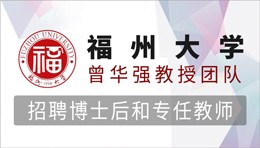
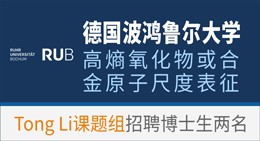
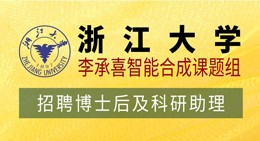


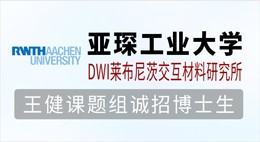

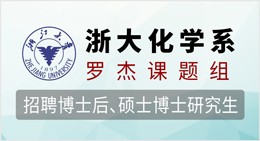
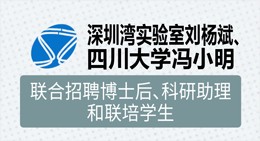



 京公网安备 11010802027423号
京公网安备 11010802027423号